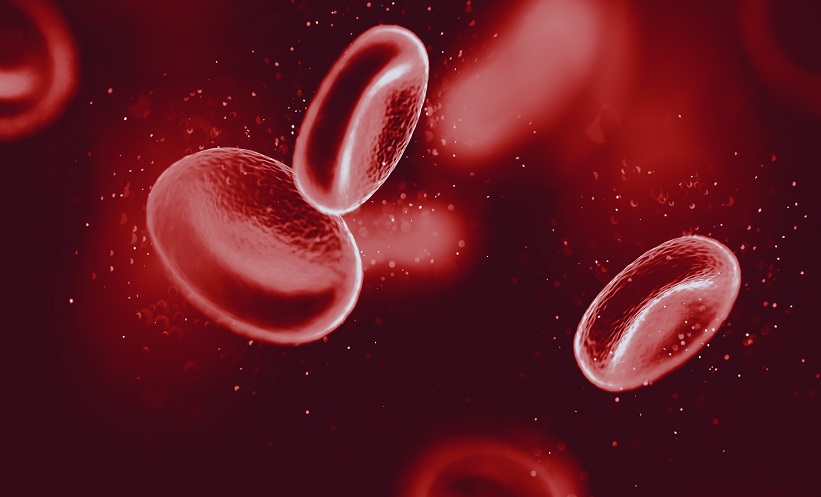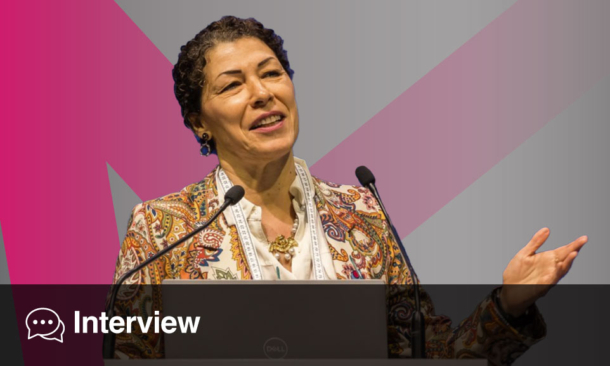Abstract
Acute myeloid leukaemia (AML) is a genetically heterogeneous haematopoietic neoplasm characterised by the accumulation of transformed immature blood progenitors in bone marrow. Since 1973, the backbone treatment has relied on the combination of cytarabine and an anthracycline, followed by allogeneic haematopoietic transplant if eligible. Therefore, the treatment decisions have largely revolved around chemotherapy drug intensity. Despite advances in our understanding of the underlying biology over the past decades, AML remains a therapeutic challenge as the overall survival is poor and treatment options are limited for relapsed/refractory AML or for unfit patients. After four decades without substantial changes, eight new noncytostatic drugs have been granted approval: vyxeos, enasidenib, gilteritinib, glasdegib, gemtuzumab ozogamicin, ivosidenib, midostaurin, and venetoclax. Despite promising preliminary results, some indications are based on early efficacy data, obtained in single-arm nonrandomised trials, highlighting the necessity for further validation in extended clinical trials. Interestingly, several druggable targets have been identified recently, associated with specific target-directed drugs. Based on the preclinical data available, great impact on clinical outcomes for patients with AML is expected, potentially increasing the therapeutic landscape for this disease.
ACUTE MYELOID LEUKAEMIA
Acute myeloid leukaemia (AML) is a life-threatening, multifactorial haematological neoplasm characterised by the accumulation of transformed immature myeloid progenitors in bone marrow and peripheral haematopoietic organs. Multiple somatically acquired driver mutations, coexisting competing clones, and disease evolution over time account for the high heterogeneity observed in patients with AML, which results in a wide inter- and intrapatient variety of cellular phenotypes and clinical outcome.1 Since the 1970s, the standard AML therapy consists of the ‘7+3’ regimen, a combination of cytarabine and anthracycline.2 This induction therapy aims to fully eliminate the leukaemic burden from the bloodstream and bone marrow. Once completed, an intensive chemotherapy cytarabine-based consolidation therapy, together with a haematopoietic cell transplantation if eligible, is followed to eliminate any potential, not necessarily detectable, leukaemic cells that may remain after induction.3 AML is mainly a disease of the elderly, with a median age at diagnosis of 68 years,4 which limits the treatment options due to comorbidities. The majority of patients will be considered unfit for intensive chemotherapy and will receive as treatment options low-dose cytarabine or hypomethylating agents (HMA), which generally fail to induce durable responses.5 Consequently, new treatment options are urgently needed for AML patients, especially for those unfit.
After decades without significant changes in treatment options, the pharmacologic landscape has unprecedentedly reshaped in the last 3 years with eight new drugs approved by regulatory agencies: vyxeos (CPX-351), enasidenib (AG221), gilteritinib (ASP2215), glasdegib (PF-04449913), gemtuzumab ozogamicin (GO), ivosidenib (AG120), midostaurin (PKC412), and venetoclax (ABT-199). However, only four drug approvals, CPX-351, ASP2215, GO, and PKC412, were based on randomised data with limitations in follow-up data availability. Optimisation of the schedule and treatment regimens, determination of safety, and potential synergistic effect with chemotherapy are still under evaluation. Nevertheless, several druggable targets have been described recently, associated with promising preclinical data that will likely have a great impact in clinical outcomes for patients with AML in the future. This review provides an overview of the novel AML treatment landscape and the most promising drugs under preclinical development that are expected to remarkably influence management of patients with AML.
FMS-RELATED TYROSINE KINASE 3
FMS-related tyrosine kinase 3 (FLT3) is one of the most frequent mutations in AML, representing approximately 30% of mutations in patients with AML,6 and are considered drivers in the majority of the cases. FLT3 mutations can be found either as internal tandem duplications in the juxtamembrane domain (FLT3-ITD; 20%) or point mutations in the tyrosine-kinase domain (FLT3-TKD; 10%). FLT3 plays a key role in controlling survival, differentiation, and proliferation of haematopoietic cells, and both FLT3-ITD and FLT3-TK constitutively activate its kinase activity. While FLT3-ITD has prognostic value,7FLT3-TK is weakly associated with clinical outcome.8
First-generation FLT3 inhibitors, such as PKC412, are promiscuous, inhibiting several tyrosine kinases, with a transient pharmacological effect, especially when used in monotherapy in relapsed AML. This lack of specificity and high affinity may contribute to adverse effects from inhibition of multiple other kinases.9 Although it initially demonstrated only modest single-agent activity, improved response rate and survival were achieved with PKC412 in combination with chemotherapy (complete response [CR]: 59% versus 54% in the placebo group),10 which supported its approval by the U.S. Food and Drug Administration (FDA) and European Medicines Agency (EMA) in 2017. PKC412 is indicated for FLT3 mutation-positive AML in combination with standard induction and consolidation chemotherapy. Second-generation FLT3 inhibitors, including ASP2215,11 crenolanib,12 and AC220 (quizartinib),13 display higher potency and specificity for FLT3, with a more restricted tyrosine-kinase recognition profile. ASP2215, a dual FLT3/AXL inhibitor, has been shown to be effective in a single-agent regimen in relapsed/refractory AML with FLT3 mutation (CR: 14% versus 11% in the salvage chemotherapy control group), inducing manageable side effects,14 leading to its recent approval by the FDA in 2018 and EMA in 2019 as a monotherapy in FLT3 mutation-positive relapsed/refractory AML. However, extensive randomised clinical trials are needed for these drugs to properly define the AML patient population suitable for each FLT3 inhibitor approved, as approvals for PKC412 and ASP2215 were controversial due to the marginal improvement reported.15 Based on their broad inhibition targets besides FLT3, these inhibitors may also improve the prognosis in AML without FLT3 mutations.
According to the mode of binding, FLT3 inhibitors can be further divided into Type I and II. Type I FLT3 inhibitors target the ATP binding site of the active conformation and are effective against FLT3-ITD and FLT3-TKD mutations. However, Type II inhibitors recognise a pocket adjacent to the ATP binding site that is accessible in the inactive conformation: only preventing the activity of ITD mutations but sparing TKD mutations. Both PKC412 and ASP2215 are Type I inhibitors, whereas AC220 belongs to the Type II group.16 In concordance, both PKC412 and ASP2215 promoted a consistent improvement in overall survival in all FLT3 mutation subtypes.10,17 The Type II inhibitor AC220 does not have significant activity against FLT3-TKD mutations,18 which is an established mechanism of resistance in AC220-treated patients.19
Despite significant progress in the development of better FLT3 inhibitors, emergence of resistances constitutes a major challenge.20 Resistance mechanisms include acquisition of secondary-driven mutations21 and modulation of alternative signalling pathways.22 Several next-generation FLT3 inhibitors are being pre- and clinically evaluated.
ISOCITRATE DEHYDROGENASE
The isocitrate dehydrogenases (IDH) are key enzymes implicated in metabolism, located in cytoplasm (IDH1) and mitochondria (IDH2). Mutations in IDH1 and IDH2 genes are found in 10% of patients with AML.23 IDH-based targeted therapies include small molecules aiming to restore normal IDH function and block the production or downstream effects of intermediate metabolites. IDH1-specific AG120 and IDH2-specific AG221 are potent in vivo mutant IDH inhibitors with high treatment responses in clinical trials (AG120 CR: 29%; AG221 CR: 19%), although no control arm was included.24,25 AG221 was approved by the FDA in 2017 for IDH2 mutation-positive relapsed/refractory AML. Similarly, the FDA also approved AG120 for IDH1-mutant relapsed/refractory AML (2018) and newly diagnosed (age ≥75 years) IDH1-mutant AML noneligible for intensive induction chemotherapy (2019). However, neither has been approved by the EMA. Mutant-IDH inhibition prompts differentiation of leukaemic cells and the emergence of functional neutrophils, suggesting that efficiency is based on differentiation induction.24,25 A constitutive activation of the RAS/MAPK pathway was associated with low responders in AG221-treated patients and warrants further investigation and analysis of rational combinations in order to overcome this resistance.26 However, the use of IDH inhibitors may lead to the IDH differentiation syndrome, which results in the release of inflammatory cytokines, constituting a serious safety concern.27 Improvement in the pharmacokinetic (avoiding rapid metabolism and clearance) and pharmacodynamic (increasing the specificity for mutant IDH, reducing undesirable effects, and increasing the therapeutic window) profiles are necessary to optimise the therapeutic potential for AML; new small molecules are under preclinical and clinical evaluation.
B-CELL LYMPHOMA 2
The B-cell lymphoma 2 (Bcl-2) family members tightly regulate programmed cell death and are divided in three different subfamilies based on their functionality: antiapoptotic multidomain proteins (i.e., Bcl-2), proapoptotic multidomain proteins (i.e., Bax), and proapoptotic BH3-only proteins (i.e., BID). Bcl-2 is overexpressed in AML cells and its expression is associated with chemoresistance.28,29 Despite promising results in preclinical models,30 the efficacy in monotherapy of the first clinical-grade Bcl-2-specific inhibitor, ABT-199, is limited.31 Previously, obatoclax, a BH3 mimetic and pan-Bcl-2 inhibitor, also showed minimal activity as a single agent in patients with AML, in contrast to its potent antileukaemic effect in preclinical settings.32 However, ABT-199 acts synergically with HMA to induce mitochondria-mediated apoptosis in AML cells (venetoclax–azacytidine CR: 37%; venetoclax–decitabine CR: 54%; no control arm was present in these studies), probably due to the HMA-mediated downregulation of Mcl-1, in which overexpression confers resistance to ABT-199.33,34 Alternatively, the durable remission observed in combination treatment (12.5 months, no control arm was present in the study) might be due to metabolic perturbations in the most primitive leukaemic cells.35 ABT-199 was granted approval (FDA 2018) for elderly (≥75 years) unfit patients with AML in combination with HMA, although a confirmatory Phase III clinical trial, performed as a randomised, placebo-controlled study, will be required to definitively measure its clinical benefit. Nevertheless, resistance to ABT-199 appears in 30% of patients with AML and neither the mechanism responsible nor a biomarker have been identified.33
HEDGEHOG
The hedgehog (Hh) signalling pathway plays a key role in the development and homeostasis of many organs and tissues, and its aberrant activation is associated with tumourigenesis.36 The importance of Hh in AML is controversial as no direct evidence of an aberrant regulation of Hh in AML cells has been consistently found.37–39 However, the development of PF-04449913, a clinical-grade smoothened (the receptor responsible for the signalling transduction) inhibitor, demonstrated that inhibition of the Hh signalling pathway severely impaired the most primitive leukaemic cell functionality and restored chemosensitivity.40 However, the antileukaemic effect was at least partially mediated by nonhaematopoietic stroma cells, as previously demonstrated.37 While the clinical efficacy was evident in combination with low-dose cytarabine (CR: 17% versus 2% in the control arm), the overall response rate remained modest (overall survival: 8.8 months versus 4.9 months in the control arm), suggesting that optimisation in treatment regimens are still needed.41 Nevertheless, PF-04449913 was approved by the FDA in 2018 for untreated elderly (≥75 years) unfit patients with AML in combination with HMA.
OLD CONCEPTS, NEW DRUGS, AND INDICATIONS
The backbone of the first-line induction therapy is composed of the combination of cytarabine and an anthracycline (either daunorubicin or idarubicin).2 Based on the synergism associated with the coadministration of cytarabine and daunorubicin in a specific molar ratio (from 1:1 to 10:1),42 the liposomal formulation CPX-351 containing a fixed, synergy-proven 5:1 ratio of cytarabine and daunorubicin was developed. This encapsulation of the conventional chemotherapeutics prolongs the half-life and increases the bioavailability, as compared to the free drugs, enhancing the antileukaemic effect and inducing similar side effects.42,43 Surprisingly, CPX-351 improved response rates in unfit and relapsed high-risk AML compared to free drugs (CR: 37% versus 26% in the control arm), without significant clinical benefit in favourable- and intermediate-risk groups.44–46 CPX-351 constitutes mainly an improved version of the conventional combination of free cytarabine plus daunorubicin; as such, a quantitative benefit is expected rather than a qualitative one. CPX-351 has recently been approved for newly diagnosed, therapy-related AML and AML with myelodysplasia-related changes, by both the FDA (2017) and EMA (2018).
GO (mylotarg™▼, Pfizer, New York, New York, USA) is a humanised anti-CD33 monoclonal antibody conjugated to the cytotoxic agent calicheamicin. CD33 is a panmyeloid marker expressed in most AML cells and healthy myeloid progenitors and mature cells. In 2000, GO received approval for CD33-positive AML in first remission not eligible for induction therapy.47 The confirmatory study failed to demonstrate clinical benefit for GO and demonstrated a higher rate of severe adverse effects.48 In 2010, GO was withdrawn voluntarily from the market. However, several clinical trials have recently shown a clinical benefit in newly diagnosed patients with CD33-positive AML (CR: 73% versus 72% in the control arm), although no evidence of benefit for adverse- and intermediate-risk patients has been described.49 GO is currently approved for newly diagnosed CD33-positive AML (FDA 2017, EMA 2018) and CD33-positive relapsed/refractory AML (FDA 2017).
IMMUNOTHERAPY-BASED TREATMENTS IN ACUTE MYELOID LEUKAEMIA
In the last decade, major efforts have been made to develop the adoptive transfer of immune cells (T or NK cells) expressing a genetically engineered chimeric antigen receptor (CAR) in AML, following the success of this approach in CD19+ B-cell acute lymphoblastic leukaemia (B-ALL).50 Despite numerous preclinical studies targeting different antigens (i.e., CD123, CD33, FLT3, CLL-1, and LeY), relatively few CAR-based approaches have been investigated in clinical trials in AML, showing a delay in the disease progression without achieving remission.51 Although the first clinical-grade CAR T in AML was generated against LeY,52 CD33 and CD123 are currently more attractive targets, especially CD123 because of its high expression on the most primitive AML cell fraction53 and its association with poor clinical outcome.54 Both antigens are almost ubiquitous in AML cells, and in several normal haematopoietic cell subpopulations.55,56 To date, the fundamental biological barrier limiting the application of CAR T cell therapy to AML is the absence of truly AML-specific surface antigens.56–58 The prolonged myeloablation resulting from CAR T cells targeting healthy myeloid and AML cells is ultimately fatal, similar to other ‘on-target off-tumour’ toxicities. Additionally, the AML microenvironment is highly immunosuppressive, impacting the efficacy of immune-related therapies. The potent myeloablation induced by AML CAR T cells could serve as a novel conditioning regimen prior to allogeneic transplantation.59
Several immune inhibitory ligands and their receptors have been extensively studied in cancer as potential modulators of key immune checkpoints. Despite the success in solid tumours, blocking monoclonal antibodies against PD-1 (nivolumab and pembrolizumab) and CTLA-4 (ipilimumab) have provided limited results in AML.60,61 Combination of immune checkpoint inhibitors with HMA could represent an interesting strategy in AML.62 Other immune-related approaches based on antibody–drug conjugates, blocking antibodies, and dual-affinity retargeting (DART) proteins are under evaluation in early-phase trials.
NEUROTRANSMITTER RECEPTORS
Classic neurotransmitter receptors have attracted increasing attention from investigators in oncology in recent years. Both dopamine and serotonin receptors are highly expressed in AML and serve as prognostic biomarkers and therapeutic targets as their pharmacological inhibition impairs AML viability in relevant preclinical models.63,64 Furthermore, the initial results in clinical trials indicated that a promiscuous dopamine D2 receptor antagonist reduced the leukaemia burden, although several off-target side effects discourage its use.65 Interestingly, inhibition of both neurotransmitter receptors induced terminal differentiation of AML cells, greatly affecting the most primitive leukaemic cell population. As the block in differentiation is a common feature of all AML subtypes and differentiated cells are more sensitive to chemotherapy and lose any self-renewal capacity, differentiation-based therapies are very attractive approaches. Based on the promising preclinical data,63,64 the differential expression of both receptors enable the existence of a feasible therapeutic window to maximise the pharmacological antileukaemic effects without major side effects, supporting the further preclinical and clinical development of specific dopamine and serotonin receptor antagonists for AML.
ORGANELLE-DIRECTED APPROACHES
Similar to solid tumour cells, AML cells present several alterations in cell organelles. At a mitochondrial level, a distinct glucose metabolism signature,66 an increased reactive oxygen species content,67 greater copy numbers of mitochondrial DNA,68 and electron transportation chain dysregulation69 are common features in AML cells to accommodate all the neoplastic requirements. Drugging mitochondrial oxidative phosphorylation (OXPHOS) using different direct and indirect approaches demonstrated promising preclinical specific antileukaemic results,70–73 especially considering that chemotherapy-resistant AML cells are highly dependent on high oxidative phosphorylation status.74
Similarly, the augmented metabolic demands associated with the transformation events result in the upregulation of the lysosomal function in leukaemic cells, inducing an increase in lysosomal biogenesis and mass together with the activation of cathepsins75 and changes in the sphingolipid metabolism.76 As a consequence of these lysosomal changes, AML cells present fragile lysosomes because of destabilisation of the lysosomal limiting membrane and lower pH. Currently, there is a growing interest in a group of structurally diverse small molecules classified as cationic amphiphilic drugs (CAD), defined by a hydrophobic ring moiety and an amine group.77 Due to their physicochemical properties, CAD passively diffuse through biological membranes and a process known as ion trapping enables their accumulation in lysosomes, eventually inducing a lysosome-dependent programmed cell death.75,78,79 Preclinical data suggest that CAD are highly specific and widely safe; however, their pharmacological profiles are suboptimal and drug delivery improvement might be required for clinical development of this drug family.
EPIGENETIC MODULATORS
Despite its high heterogeneity, a low mutation burden is found in AML.80 However, global alterations in DNA methylation patterns are complex, further supporting the notion that epigenetic heterogeneity better explains leukaemia identity compared with the genetic background.81–83 Thus, the AML epigenome has emerged as a new and exciting target for drug discovery.
The histone demethylase LSD-1 plays key roles during oncogenesis, becoming an emerging target for haematological and solid tumours. Several LSD-1 inhibitors are under clinical assessment for AML, such as ORY-100184 and GSK-2879552.85 Despite the promising data generated in mouse models, these LSD-1 targeted agents induced unsubstantial overall response rates in patients with relapsed/refractory AML.86 As the preclinical data suggested the possibility of synergistic effects of LSD-1 with already approved HMA,84 clinical trials to evaluate the combination therapy are ongoing; therefore, the future clinical development of LSD-1 inhibitors for AML therapy is uncertain.
FUTURE PERSPECTIVE
While advances in supportive care and prognostic risk stratification have optimised the performance of standard chemotherapy, overall long-term survival remains poor. Moreover, for four decades the treatment paradigm has been based on a simple binary distinction: intensive chemotherapy (potentially curative) and low-intensity regimens (palliative). Since 2017, several new drugs have been approved, incorporating the notion of personalised treatments for AML. However, caution should be highlighted until more extensive, carefully designed clinical trial studies are terminated and analysed. Considering the preliminary data already available, novel targeted therapies based on new mechanisms of action are likely to be more successful than current treatments, as effective antileukaemic activity with reduced toxicity is expected. In any case, validation in clinical trials should be conducted.







